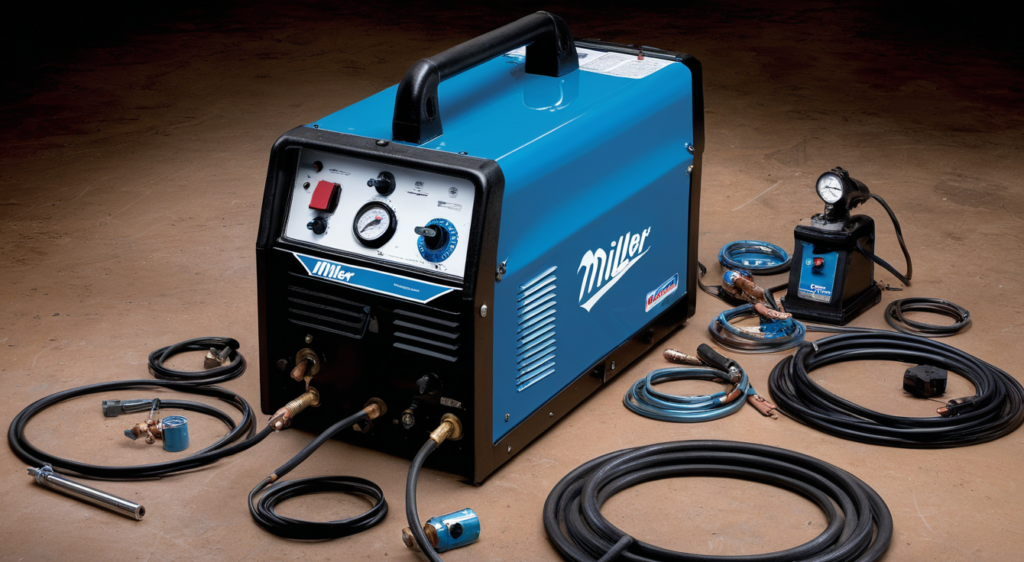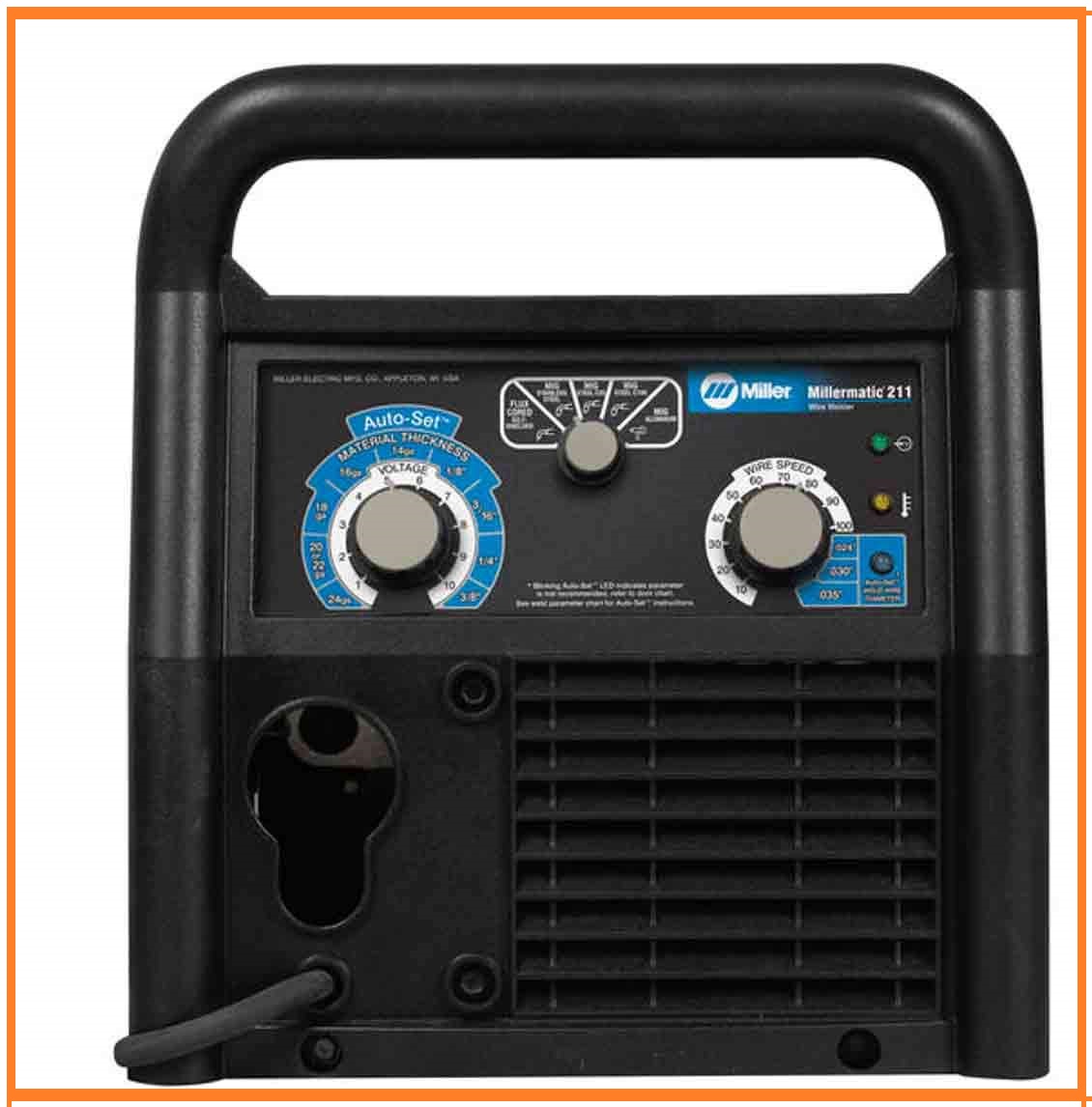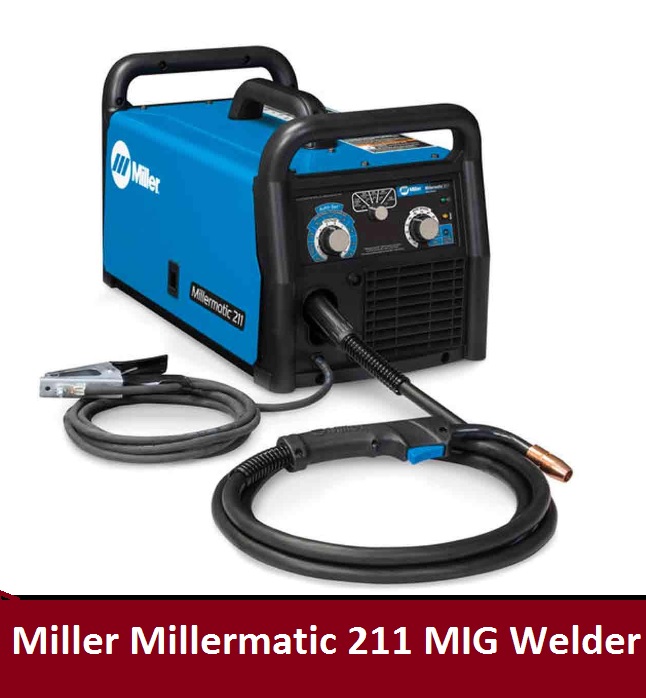Welders are tools used to fuse metal by heating it to its melting point and then applying pressure to create a strong bond. There are several types of welding processes, including MIG (Metal Inert Gas), TIG (Tungsten Inert Gas), and Stick welding.
Finding a good MIG welder can be difficult as many options are available on the market. The Miller Electric Millermatic 211 is a great option because it offers a high level of versatility and control. It can adjust the wire feed speed and voltage, giving the user greater control over the weld and the ability to weld various materials and thicknesses.

It has a built-in gas solenoid valve, ensuring the weld is protected from oxidation and other contaminants. Furthermore, the Millermatic 211 is lightweight and portable, making it easy to transport and set up on the job site. Also, a wide range of accessories is available to customize the welder to specific needs. There are some other features that you will find out in this miller electric Millermatic 211welder review!
Overview of Miller Electric Millermatic 211 MIG Welder
Miller Millermatic 211 MIG Welder

- Auto Set Function
- Voltage Dial
- Smooth-Start Action
- Household Power up to 240V
- Built-in Gas Solenoid Valve
The Miller Electric Millermatic 211-907614 is a high-performance MIG welder designed for professional and DIY use. One of the key features of the Millermatic is its Auto-Set Elite system, which automatically sets the welder’s parameters for the best results based on the thickness of the material being welded. This eliminates manual adjustments and ensures a smooth, consistent weld.
It is also lightweight and portable, making it easy to transport and set up on the job site. It has a duty cycle of 60% at 150A and a maximum output of 150A. It also features a multi-voltage plug, allowing easy connection to any power outlet. The Miller Electric Millermatic is a high-performance MIG welder that offers advanced technology, ease of use, and portability. It is ideal for professionals and hobbyists who want a reliable and versatile welding machine that can handle a wide range of welding applications.
Key Specifications
| Input Voltage | 240 V |
| Material Thickness | 24 ga |
| Power Cable Length | 10 ft |
| Output Range | 30 A to 230 A DC |
Features of Miller Electric Millermatic 211-907614
Auto Set Function
The Miller Electric Millermatic 211’s Auto-Set feature is the most noticeable benefit. With the ability to switch between automated (Auto-Set) and manual operation, you may tailor the welder’s output voltage and wire feed speed to your needs like any other MIG welder.
Using the Auto-Set option eliminates the need for any kind of deliberation. The wire thickness of the spool may be entered into the top dial, often used to set the wire feed in inches/min. Steel (C25 or C100), stainless steel (304 or 316), aluminum (6061 or 7075), and flux-cored welding (FCW) are the many material possibilities available through a selection switch.
Voltage Dial
Instead of the standard 1-10 unlimited voltage range, the voltage dial may be adjusted according to the thickness of the material being worked on. The integrated computer will determine the optimal wire speed and voltage based on your selection of material, wire diameter, and material thickness.
It’s color-coded blue, so you can see whether you’re using the welder’s built-in computer to adjust or take control manually. If you’d rather adjust the settings on your own, there’s a thorough table in the wire spool area to guide you.
Smooth-Start Action
Smooth-Start action is a bonus for both novice and expert welders. As inverter technology has spread, so has this phenomenon. The Millermatic 211 features one of the greatest methods for controlling the start-up current of any welder. As a result, your weld may start smoothly and without spatter, thanks to the arc starter’s ability to regulate current.
You could worry that there’s a trade-off for having so much automation at your disposal. But that’s not how it works at all. Even if you choose not to utilize the Auto-Set feature, this Smooth-Start gives you full control over all the settings.
Household Power up to 240V
The Millermatic 211-907614 has all the power and features you need from an inverter MIG welder of this size, and its overall specifications are on par with the finest. It accepts input voltages of 110V, 115V, 120V, 220V, 230V, and 240V and works with solid and flux-cored wires. The welder’s Multi-Voltage Plug (MVP) allows it to switch seamlessly from a 120-volt outlet to a 240-volt outlet.
The welder offers a 115A output at 19.8VDC at a duty cycle of 20% when run on regular home voltage (120V). The rated output remains unchanged at 150A at 21.5VDC and a 40% duty cycle regardless of the AC input voltage, which may be increased to 240V.
Built-in Gas Solenoid Valve
The Miller Electric Millermatic 211-907614 features a built-in gas solenoid valve, which is an important component of the welder’s overall design. This valve automatically turns the gas on and off as needed, ensuring that the weld is protected from oxidation and other contaminants, which results in a stronger, more durable weld. This feature eliminates the need to turn the gas on and off manually and ensures that the weld is always protected.
Additionally, the solenoid valve is designed to work seamlessly with the rest of the welder, ensuring that the gas flow is consistent and efficient. This built-in gas solenoid valve is a great feature that adds to the overall quality and durability of the Miller Electric Millermatic 211.
Pros
- Multi-voltage plug
- Lightweight and portable
- Spool gun capability
- 240V outlet
- Good Voltage range
Cons
- No TIG welding capability
- A bit pricey
Final Verdict
Overall, the Miller Electric Millermatic 211-907614 is a high-performance MIG welder that offers advanced technology, ease of use, and portability. It is ideal for professionals and hobbyists who want a reliable and versatile welding machine that can handle a wide range of welding applications. However, it’s important to keep in mind the drawbacks while making a decision.
